Star Wars: Imperial Assault and Star Wars: Armada are two of the biggest and best board games around at the moment. Both have had recent expansions that shake things up, and both of those expansions have been terrific.
If you’re just joining us, both are games from Fantasy Flight. Imperial Assault is a turn-based tactical war game (think XCOM), and Armada is a game where you control battles between miniature versions of Star Wars’ biggest ships. Both are very, very good.
But over the last few months they have got better. In addition to smaller updates, Imperial Assault got a major expansion called The Bespin Gambit, while Armada got a fourth round of new ships.
The Bespin Gambit
Like Twin Shadows (Tatooine) and Return to Hoth (…Hoth), The Bespin Gambit serves as a full-fledged expansion to the core game that takes it to a new location. It introduces two new Rebel heroes (with miniatures), other hero units like Lando and Bossk (available as plastic units as seperate purchases), new mercenary units, new terrain tiles based on Cloud City and, most important of all, a new mini-campaign.
Which I found hard as hell. Having recently come off a relatively easy victory in the main campaign as a Rebel hero, me and my crew went into this smaller effort with some swagger, but quickly had our asses handed to us by a combination of clever new enemies (fuck you, Ugnaughts) and some tough victory conditions.
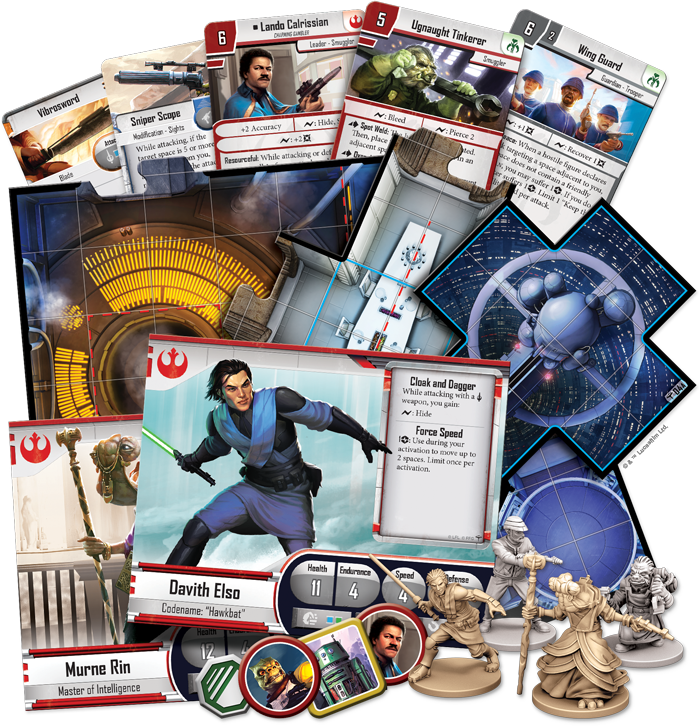
Pretty much everything you get inside the box (you actually get multiples of the guards & Ugnaughts)
The campaign setting itself is awesome. In just a few sets of tiles the game is able to recreate the setting of some of the key moments from Empire Strikes Back, from the carbon freezing platform to Lando’s dining room to the walkway where Luke and Vader have their moment. It’s a cheap move, but marching your units over such “famous” terrain does add something to the experience, as superficial as it is.
Both the new Rebel heroes included in the box have nice tricks. Davith Elso, a Jedi, is able to hide, which makes hitting him almost impossible. Murne Rin, an Ithorian, is even better: she’s able to issue false orders to Imperial units and essentially take them over, using them as pawns to attack their own troops.
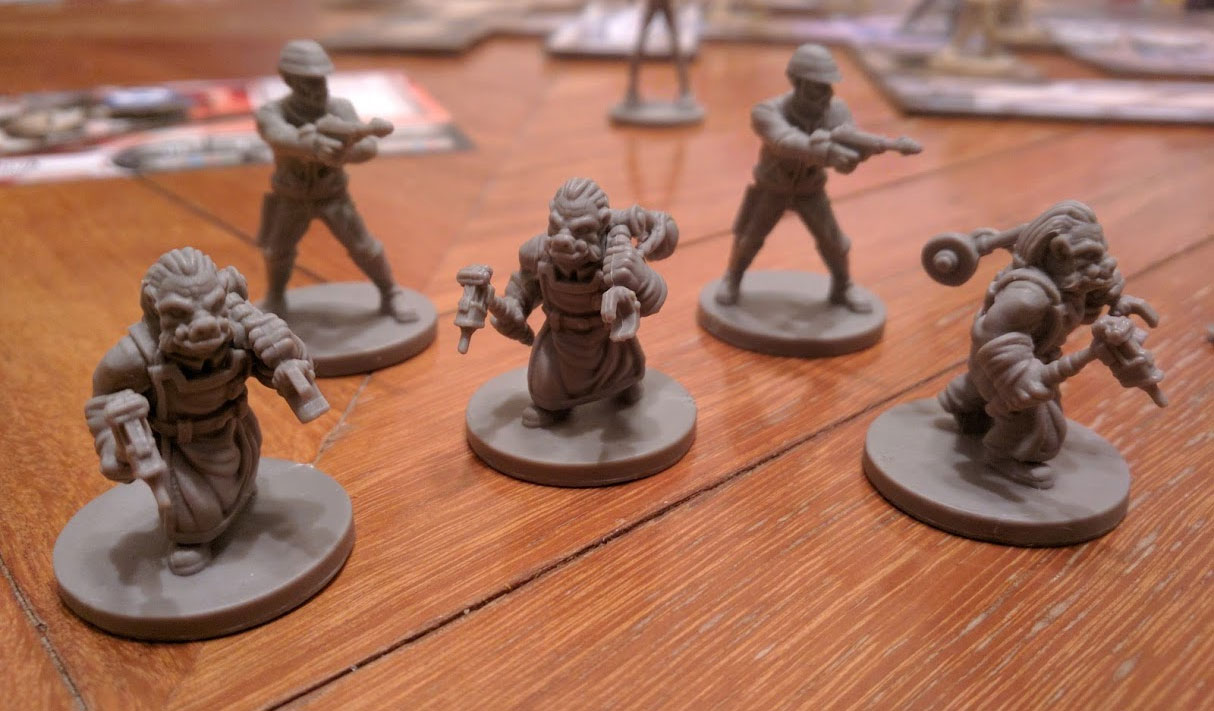
This all made The Bespin Gambit a slightly different experience than I was used to. In my larger Imperial Assault campaigns I’d played more traditional characters, like “big gun man” and “melee Wookiee”. Here, I was encouraged to adopt a more experimental, stealthy style of play, and it was a lot of fun exploring that other side of Imperial Assault’s systems.
Armada Wave 4
Wave 4 addresses some of Armada’s balance issues in ways that are both blunt (for the Rebels) and fascinating (for the Empire).
Until now, the Imperial Class Star Destroyer has been the undisputed heavyweight champion of the game, its frontal batteries not only able to decimate anything that gets in its way, but fairly easy to use against a wide range of targets. The Rebel’s biggest ship, meanwhile, had to expose its flanks to get off a broadside, making it a trickier proposition.
That changes now with the introduction of the Liberty, a Mon Calamari cruiser that’s basically a Rebel mirror of the ISD, packing a massive collection of guns in its front. It’s a predictable design decision, sure, but also a handy one for this game, as it helps break up the “tricks vs firepower” division between the factions. Now Rebel players can just go toe-to-toe against the Empire instead of having to fly rings around them.
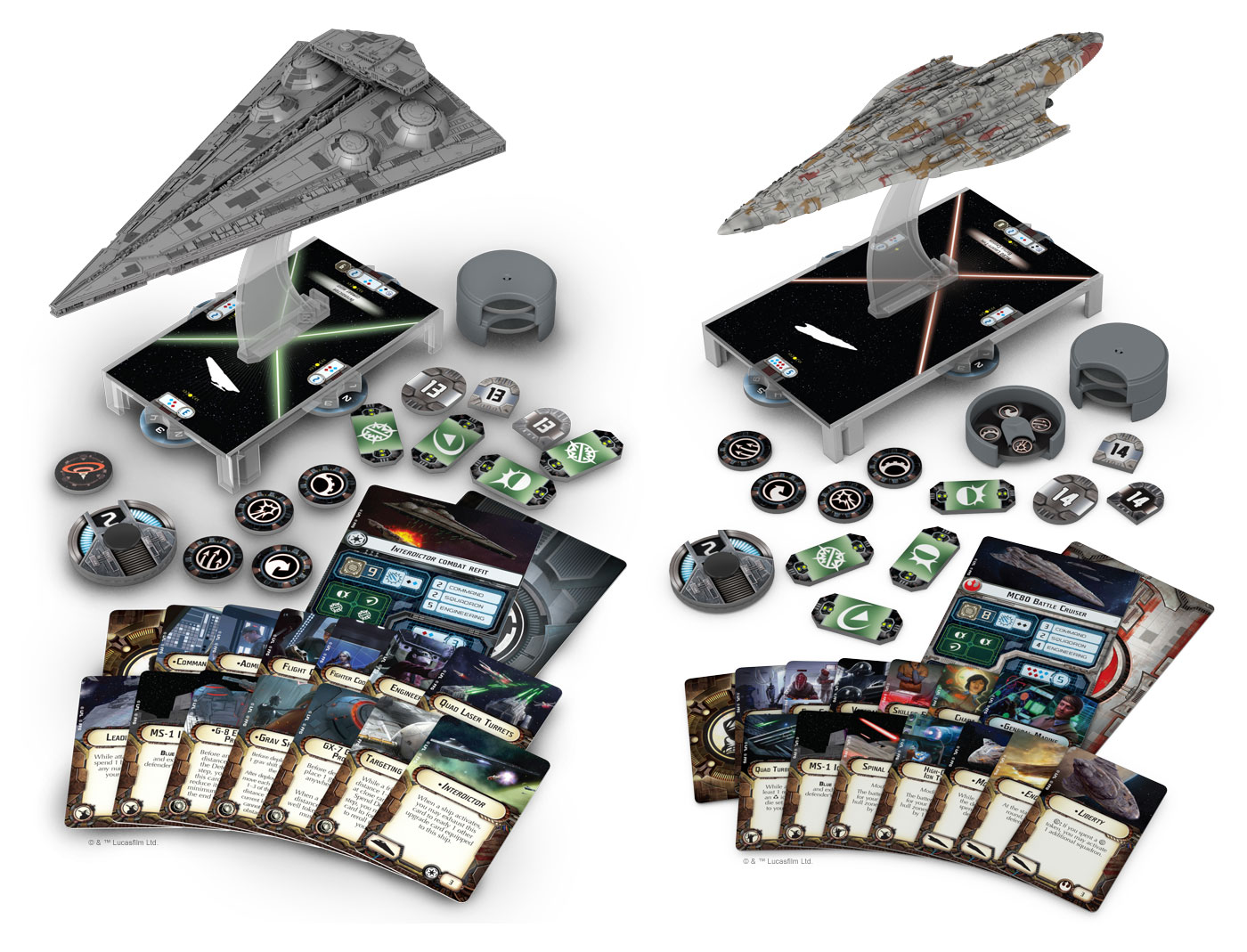
Both of the Wave 4 ships. Note that you have to buy them separately, and they’re $US40 ($53) each.
To counter this, Imperial players get an Interdictor, which was first created by Lucasarts for their X-Wing series (another in a long line of nods towards Star Wars video games from Fantasy Flight). While that ship’s main role in the fiction (pulling people out of hyperspace) can’t be catered for by this game’s rules, it does have a bunch of other interesting abilities, like being able to stop an enemy ship dead in its tracks, and also to deny large areas of the playing surface to Rebel fleets at the deployment stage by dropping “grav warps” on the table.
I think it will take me some time to get used to the best ways to use both these ships, as my early impressions are that they mess with your established fleet preferences, and force a rethink of any strategies you’ve been relying on until now. As a Rebel leader I wasn’t used to being able to park such a powerful ship in the corner of the table and unleash hell, and as an Imperial the Interdictor’s special abilities were tough to find room for until I worked out that it’s also fairly handy in a straight fight.
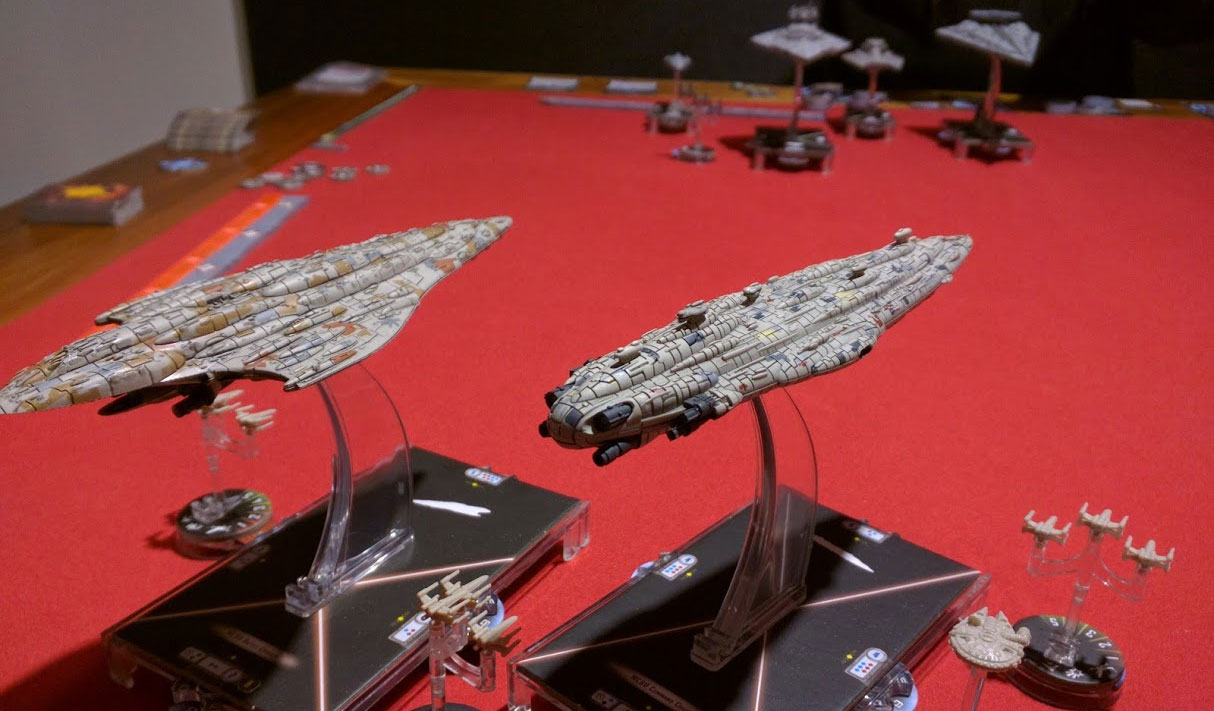
It felt weirdly satisfying to take a heavyweight fleet like this into battle when playing as the Rebels.
Both ships are a blast to command, but that fun comes with a caveat: the cost. Both are “big box” ships, meaning they’re $US40 ($53) each. That won’t be too big a shock for experienced Fantasy Flight gamers (especially of this game), but if you’re a curious onlooker, be warned this is an expensive hobby to pick up.
It’s tough reviewing these kind of expansions in a traditional video gamey sense (or even like I would a standalone board game) because they don’t work like video games. Like, you rarely get something like this and it turns out disappointing, or takes something away from the main game, because with board games like this you tend to know what you’re getting before you get it, by virtue of you having played the main game, so you know the game’s systems, and what’s good (and bad) about them.
So, yes, both of these expansions are good! They add good things to games that were already good. The Bespin Gambit adds more missions and more varied heroes to a game that was already so strong because of its creative mission design and varied roster of heroes. And Armada’s Wave 4 adds two big plastic ships with interesting abilities to a game that is popular for its big plastic ships with interesting abilities.
Sorry if that’s a bit predictable, but hey, that’s how it is. Two good games can, for a price, now get better.
Now if Fantasy Flight can just get around to making some apps for them to help manage campaigns (and play Star Wars sound effects after every dice roll…)
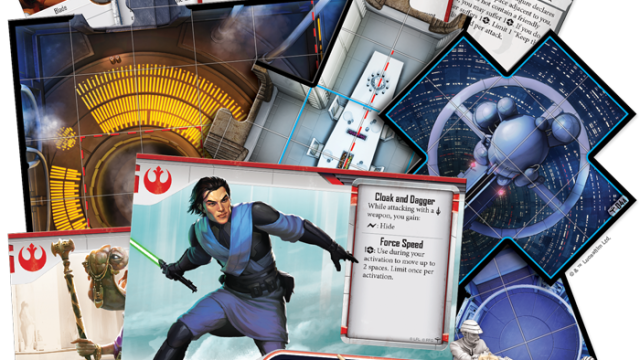
Comments
3 responses to “The Star Wars Board Games Just Keep Getting Better”
Imperial Assault – how does the multiplayer work on that? Are you playing with or against friends?
It’s 1 v 4. So someone is kind of a dungeon master.
No love for X-wing?
The upcoming waves of ships are AWESOME. The ARC and TIE:SF are going to be amazing fun to play!